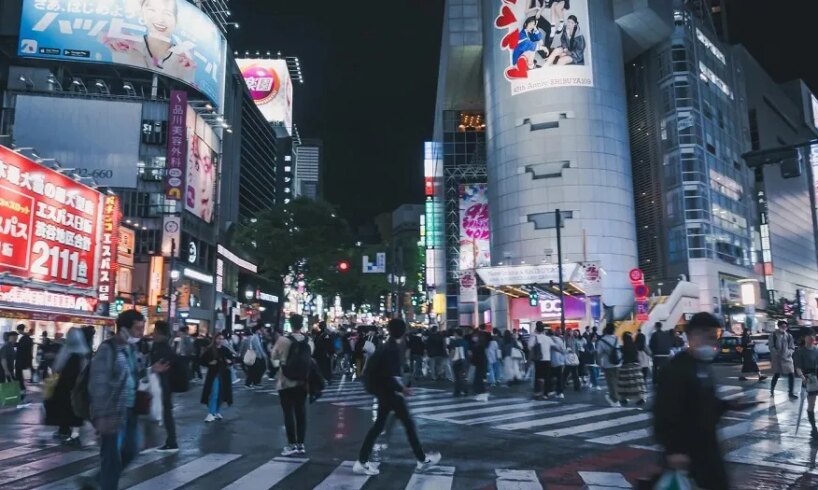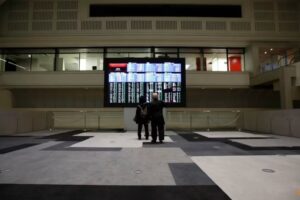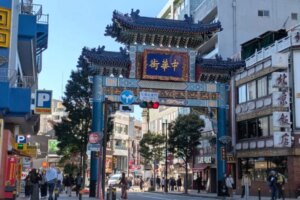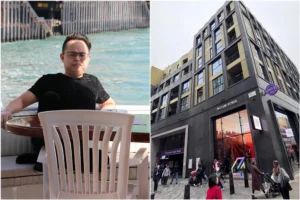
What’s behind the Shibuya slide as a spot to grab a drink?
Japanese restaurant information website Hot Pepper recently conducted its latest user survey, and among the questions it asked Tokyo-area residents is which neighborhoods they like to go out for drinks in. Downtown Tokyo’s Shinjuku was the top pick for the sixth straight year, followed by the Tokyo Station surroundings and Ginza in second and third place, which swapped positions since last year’s poll.
However, there’s one internationally famous part of Tokyo that’s no longer anywhere to be found in the top 10: Shibuya.
A total of 2,858 responses were collected from residents of Tokyo and its neighboring prefectures of Kanagawa, Chiba, and Saitama between the ages of 20 (the legal drinking age in Japan) and 59. Though it squeezed into the top 10 last year, in this year’s survey Shibuya dropped two places, down to 12th overall and behind eight other Tokyo neighborhoods. Shibuya even lost out to Omiya in Saitama, often derided as one of the least fashionable prefectures of Japan.
● Neighborhoods respondents want to go drinking in
1. Shinjuku (Tokyo)
2. Tokyo Station area (Tokyo)
3. Ginza (Tokyo)
4. Shinbashi (Tokyo)
5. Ueno (Tokyo)
6. Yokohama Station area (Kanagawa Prefecture)
7. Ikebukuro (Tokyo)
8. Ebisu (Tokyo)
9. Minato Mirai (Kanagawa Prefecture)
10. Akasaka Mitsuke (Tokyo)
11.Omiya (Saitama Prefecture)
12. Shibuya (Tokyo)
▼ By the way, if you’re wondering why Tokyo’s Roppongi isn’t in the top 12, the neighborhood has long been a more popular hangout for foreign tourists and expats than for Japanese locals.
It wasn’t all that long ago that Shibuya was considered one of the top drinking spots in Tokyo, right up there with Shinjuku and Ginza. So what’s happened? Hot Pepper’s researchers have some theories, pointing out a couple of things the survey’s top rankers have that Shibuya doesn’t.
The first thing Shibuya is missing is a well-developed underground entertainment center. This might seem surprising to anyone who’s walked through the long tunnel that stretches northwest from Shibuya Station’s subway gates for multiple blocks, but Shinjuku and Tokyo Stations’ are on a whole other level, not only providing easy access to much of the neighborhood’s above-ground pubs and restaurants, but also having plenty of their own within the subterranean centers. Shibuya Station’s tunnels, on the other hand, don’t have any restaurant rows of their own, and they mainly run along the outside edge of the neighborhood, making them less convenient for navigating to places to eat and drink in Shibuya’s interior, especially if you’ve got a moderate or larger-sized group of people meeting up.
Of course, you could always go up to the Shibuya streets and walk from there, but that leads to another aspect the researchers think is hurting the neighborhood in the rankings: a lack of identity.
Once again comparing with top-ranking Shinjuku, Shinjuku itself has a handful of distinct sub-neighborhoods within it. Kabukicho is the place for rowdy, or some might even say sleazy, bars. Sanchome, with its fashion-conscious department stores and more elegant eateries, attracts a clientele of young women. The west side of Shinjuku Station has plenty of down-to-earth izakaya pubs for crowds of thirsty salarymen to stop in at on their way home from the office.
Shibuya, though, is more of a hodgepodge these days, in terms of how it’s laid out. The neighborhood has fast food joints and clothing shops that appeal to teens and early twenty-somethings, office skyscrapers with older adult professionals, and, in recent years, no shortage of souvenir and specialty shops clearly aimed at accommodating the massive inflow of foreign tourists who come to Shibuya to take photos in front of the statue of faithful dog Hachiko and then film selfies as they walk across the world-famous Shibuya Scramble intersection with their phones in their outstretched hands. Unlike in many other neighborhoods that ranked higher in the survey, Shibuya’s youth, mature adult, and international traveler-oriented attractions are all kind of mixed together geographically, which makes it hard for the neighborhood to have sub-pockets with their own identities, the researchers say. It’s not that Shibuya feels bland or dull, but the lack of a defining atmosphere, even at the zoomed-in level, can mean it doesn’t really feel like the perfect spot to any one demographic.
But even if Shibuya isn’t someplace as many people are thinking to go out of their way to grab a drink in, what about the employees of companies with offices in the neighborhood? Shouldn’t a lot of them already be in Shibuya five times a week, making it, by default, where they’ll grab a beer or two after their shifts end? Not necessarily. As the researchers point out, many of the largest corporations with offices in Shibuya are in the IT industry, in which partial work-from-home options are more prevalent than other fields, and the work also tends to attract less traditionally gregarious individuals than, say, sales work, all of which could be contributing to Shibuya’s declining popularity as a place to drink among the survey respondents.
▼ When you work from home, there’s no need to go to a pub for a drink if you’ve already got a couple of cold ones in your fridge.
And while it’s only tangentially touched upon by the researchers, the recent perception of Shibuya as a site of overtourism can’t be ignored. “If you go to Shibuya, you’ll see more foreigners than Japanese people” is a common comment in conversations among Japanese locals these days, and while that’s exaggerating the situation, it is true that Shibuya has some of the densest concentrations of foreign tourists in Japan these days, and with the weak yen continuing to provide favorable exchange rates, there’s a growing sense that Shibuya is significantly more touristy and expensive than it was just a few years ago.
Shibuya’s slip in the survey rankings has similarities with Kyoto’s recent decline in attractiveness for domestic Japanese travelers. It’d be going too far to say that no Japanese people go drinking in Shibuya or take trips to Kyoto anymore, but current circumstances are undeniably causing a dip in their popularity, and they might not be rebounding to their former images for some time.
Source: Business Insider (1, 2) via Yahoo! Japan News via Jin
Top image: Pakutaso
Insert images: Pakutaso (1, 2, 3)
● Want to hear about SoraNews24’s latest articles as soon as they’re published? Follow us on Facebook and Twitter!
Like this:
Like Loading…





